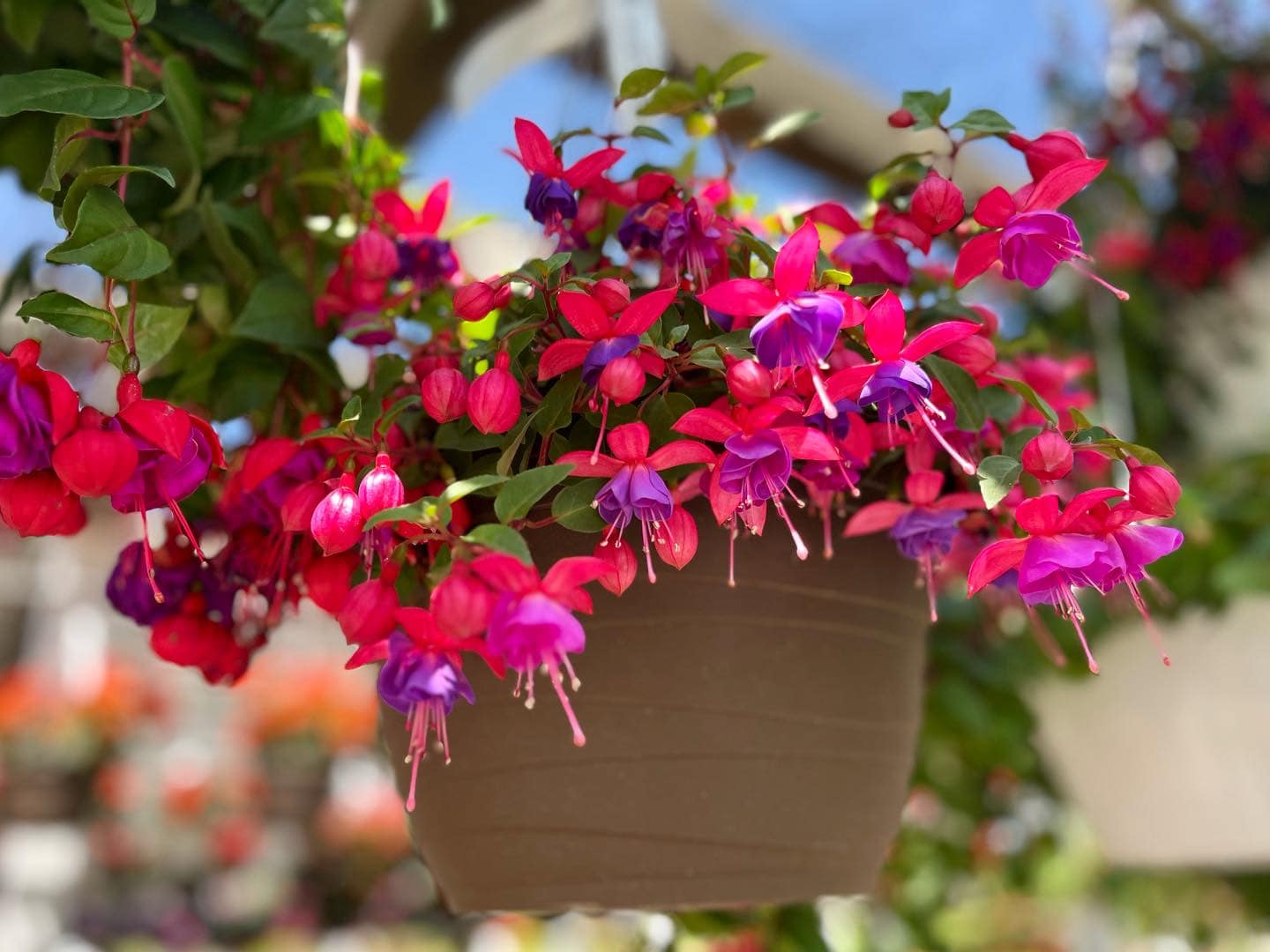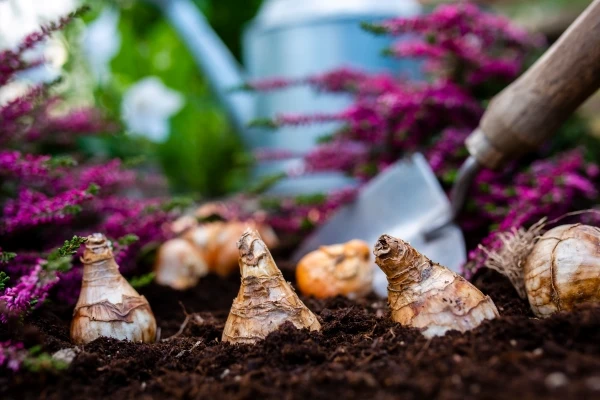
Easy Care for Containers, Planters, & Hanging Baskets
Watering:
Container gardens demand regular attention, especially during periods of hot weather when planters need to be checked daily for watering! With a few exceptions of cacti and succulents, planters should never be allowed to completely dry out.
Not sure how and when to water? It’s best to thoroughly soak planters and hanging baskets, then allow them to drain. If you use saucers under your planters, be certain to tip them to allow excess water to drain. Find the balance with soil moisture. Soil should be barely moist – never bone dry, never saturated.
When to water can be tricky. You need to assess planters daily for their water needs. Hanging baskets, especially moss baskets, tend to dry out very quickly. Baskets and planters that are in exposed, windy areas may need to be watered daily. Remember, clay or terra cotta planters tend to dry out more quickly than glazed, resin or plastic pots. Consider adding a water polymer to the soil mix to retain the needed moisture.
Fertilizing:
Flowering annuals and tropical plants will benefit greatly from regular feedings. Whether you choose a granular or liquid fertilizer, it’s important to read and follow the label for rates and frequency of application.
-Liquid feeding of annual planters and hanging baskets is the preferred method. If you are a ‘hands-on’ gardener, you probably liquid feed on a regular basis.
-Granular fertilizers can be mixed into the potting soil at the time of planting. Depending on the product you use, a follow-up application may be needed during the growing season. Slow-release granular fertilizers can last for 3-4 months, so one application would be all that is needed for our growing season on Long Island. Read and follow label directions for rates and frequency.
Deadheading:
Deadheading means removing old or spent flowers from plants. This is done for several reasons. Deadheading can encourage additional blooms during the growing season. Neatness can be another reason to deadhead, especially when plants are in a visible area. Use sharp, clean hand snippers or pruners to remove spent blooms, then collect and throw out or add to compost.



